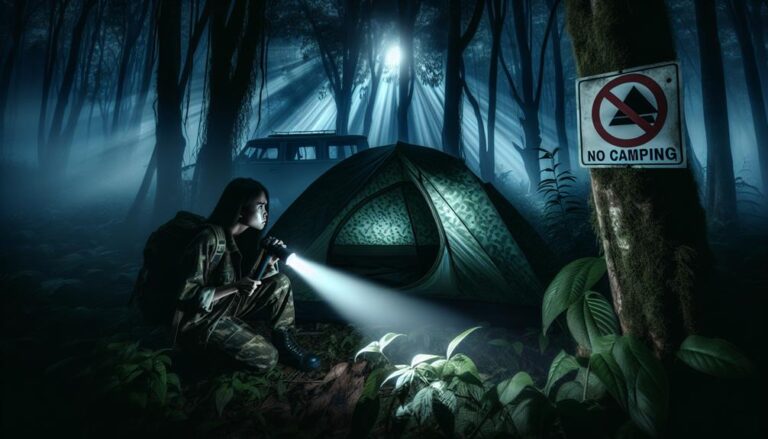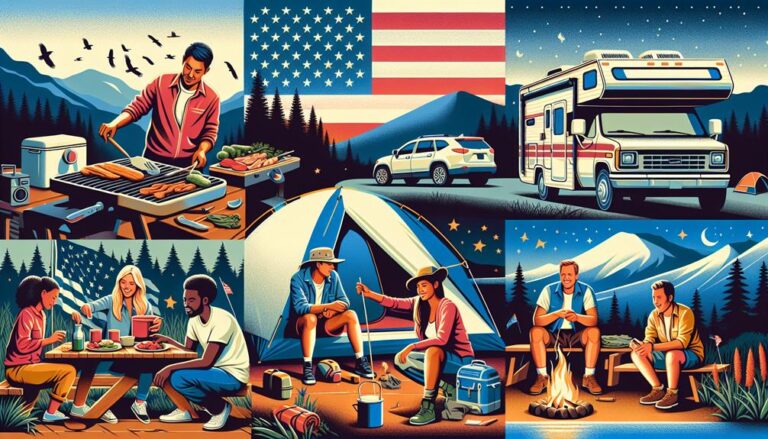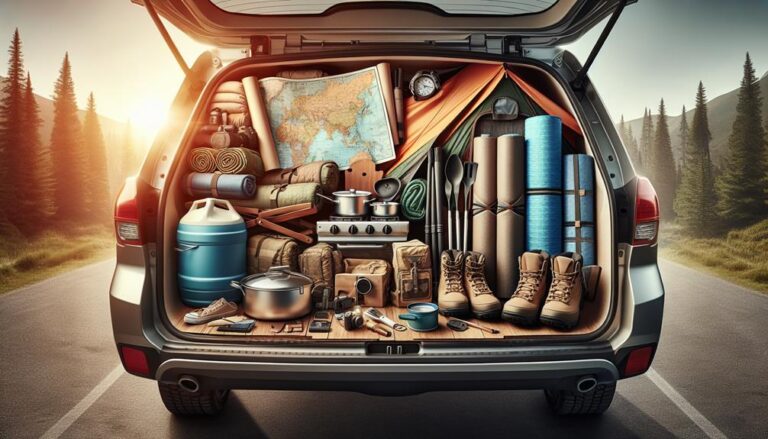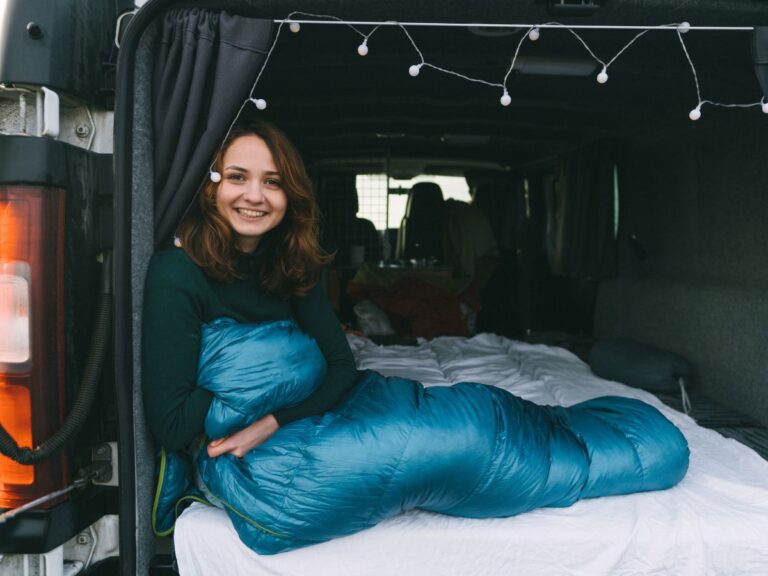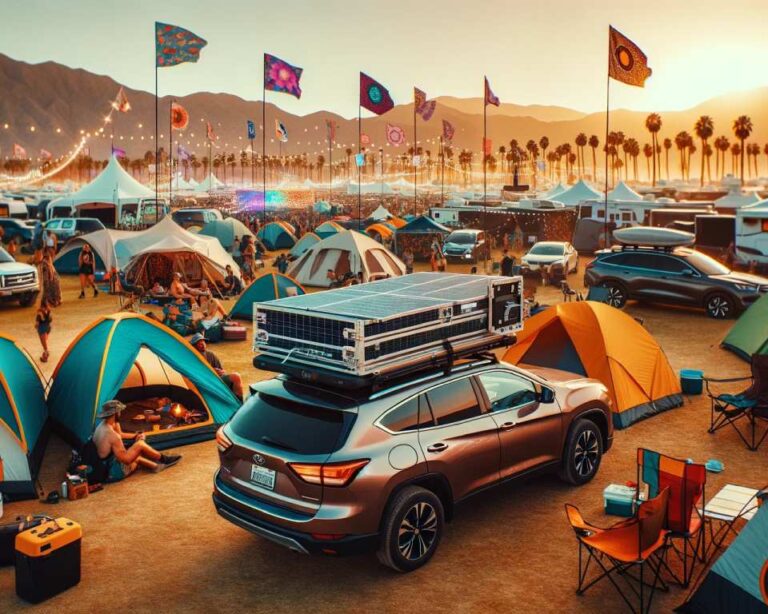Mastering Safe Car Camping: Best Practices for Secure Overnight Stays
Welcome to our guide on safe car camping practices! If you’re planning an outdoor adventure and looking for car camping safety tips and camping safety guidelines, you’ve come to the right place. We understand the importance of prioritizing safety during your overnight stay, ensuring a worry-free and enjoyable experience in the great outdoors.
By following these best practices, you can master the art of safe car camping and have peace of mind throughout your journey. From preparing your gear and supplies to choosing secure and legal camping locations, we’ve got you covered. Let’s get started!
Prepare yourself by gathering all the necessary car camping essentials. From water and food to clothing and a first aid kit, our camping safety checklist can help ensure you have everything you need for a successful and safe camping experience.
Choosing safe and legal camping locations is crucial for your security. Research public lands overseen by authorities like the Bureau of Land Management to camp in authorized areas. Respecting boundaries and avoiding trespassing on private property will help maintain your safety and prevent legal issues.
Once you’ve found the perfect camping spot, it’s time to set up your campsite safely. Scan the surroundings for potential hazards, select a flat and stable ground for pitching your tent, and keep your campsite organized and clutter-free to prevent accidents and ensure a safe camping experience.
Fire safety is paramount when camping. Before starting a campfire, check for fire bans and regulations in the area. Clear the surrounding area of flammable materials, never leave a fire unattended, and always have a bucket of water or a fire extinguisher nearby for emergencies. Remember to completely extinguish the fire before leaving the campsite.
When camping in natural areas, it’s important to stay aware of wildlife. Familiarize yourself with the types of animals, plants, and insects commonly found in the park or campground you’re visiting. Respect their habitats, keep a safe distance, and store your food properly to avoid attracting wildlife and minimize the risk of encounters.
Your personal safety is our priority. Protect yourself from the elements, let someone know your itinerary, and be equipped to communicate in case of emergencies. Trust your instincts and practice situational awareness for a safe camping experience.
Emergencies can happen, even when camping. Being prepared is essential. Carry a well-stocked first aid kit, learn basic first aid skills, and find out the nearest medical facilities and emergency contacts. Additionally, have a plan for severe weather conditions and know the proper procedures for handling emergencies such as injuries or accidents.
Finally, as responsible campers, let’s respect the environment. Practice sustainable camping by following Leave No Trace principles. Dispose of waste properly, minimize your impact on the surroundings, and leave your campsite cleaner than you found it. Together, we can preserve the beauty of nature for future generations.
With these safe car camping practices and camping safety guidelines, we hope you’ll enjoy an unforgettable outdoor adventure. Stay tuned for more tips and insights to enhance your car camping experience!
Prepare Your Gear and Supplies
Before embarking on a car camping trip, it is crucial to prepare your gear and supplies. Creating a comprehensive camping checklist will ensure that you have all the car camping essentials you need for a successful and safe camping experience.
Car Camping Essentials
When preparing your gear, consider the following car camping essentials:
- Tents and Sleeping Gear: Ensure you have a suitable tent, sleeping bags, sleeping pads, and pillows for a comfortable night’s sleep.
- Cooking Equipment: Pack a portable stove, cookware, utensils, and plates for preparing meals at the campsite.
- Food and Water: Stock up on non-perishable food items and carry an ample supply of water or a water filtration system.
- Clothing: Pack appropriate clothing for different weather conditions, including warm layers, rain gear, and sturdy footwear.
- First Aid Kit: Include essential medical supplies, such as bandages, antiseptic ointment, pain relievers, and any necessary prescription medications.
- Lighting: Bring headlamps, lanterns, and flashlights with extra batteries to illuminate your campsite at night.
- Navigation Tools: Carry a map, compass, and GPS device to navigate your way during hikes or exploration.
- Personal Hygiene Items: Don’t forget toiletries, hand sanitizer, toilet paper, and any other personal care items you may need.
Pro Tip: Double-check your camping checklist to ensure you have all the necessary gear and supplies before setting off on your adventure. Making a list and checking it twice will help you avoid any last-minute scrambling or forgotten items.
Remember, preparation is key to a smooth and enjoyable car camping trip. Having all the essential gear and supplies will not only enhance your comfort but also contribute to your safety while exploring the great outdoors.
Choose Safe and Legal Camping Locations
When it comes to car camping, selecting a safe and legal camping location is of utmost importance. By choosing authorized areas and respecting boundaries, you can ensure a secure and worry-free camping experience.
Research Public Lands and Authorities
Before heading out on your camping adventure, take the time to research public lands overseen by authorities like the Bureau of Land Management (BLM). These lands often offer designated camping areas that are safe and legally permitted. Visit the BLM website or contact local government agencies for information on authorized camping locations.
Respect Boundaries and Private Property
Respecting boundaries is crucial for both your safety and the legal implications of your camping trip. Stick to designated camping areas and follow any specific rules or regulations provided by the land management agency. Avoid trespassing on private property, as this can lead to legal issues and potentially unsafe situations.
Remember, securing a safe camping location is the first step towards a successful outdoor adventure. By choosing authorized public lands and respecting boundaries, you can enjoy your car camping experience with peace of mind.
If you’re unsure about the legality of a camping location, it’s always best to err on the side of caution and find an alternative option. There are plenty of legal camping locations available, ensuring that you can still enjoy the beauty of nature without any unnecessary risks.

Set up Your Campsite Safely
When it comes to car camping, ensuring the safety of our campsite is of utmost importance. By taking proper precautions during the setup process, we can minimize risks and enjoy a secure camping experience. Here are some essential tips for setting up your campsite safely:
1. Scan the surroundings for potential hazards
Before pitching your tent, carefully assess the area for any hazards that might pose a threat to your safety. Look out for unstable branches, animal nests, or tripping hazards such as rocks or tree roots.
2. Choose a flat and stable ground
Selecting a flat and stable surface to pitch your tent is crucial for a secure campsite. Avoid areas prone to drainage issues or potential flooding. Additionally, check for any sharp objects or debris that might damage your tent or camping gear.
3. Organize your campsite and minimize clutter
A clutter-free campsite not only provides more space but also reduces the risk of accidents. Ensure that your camping gear, equipment, and personal belongings are properly organized and stored. Keep pathways clear to prevent tripping hazards during the night.
4. Utilize proper lighting
Illuminate your campsite adequately during nighttime by using reliable and appropriate lighting sources. Headlamps, lanterns, or battery-operated LED lights can help you navigate easily and minimize the risk of accidental falls or injuries.
Remember, a well-set campsite enhances both safety and comfort during your camping adventure.
By following these campsite safety tips, we can create a secure environment that allows us to fully enjoy our car camping experience. Keep in mind that safety should always be a top priority, ensuring that we have peace of mind during our time in the great outdoors.
Practice Fire Safety
When it comes to camping, fire safety should always be a top priority. By following these campfire safety tips and fire safety precautions, you can ensure a safe and enjoyable camping experience.
Check for Fire Bans and Regulations
Before starting a campfire, it is important to check for any fire bans or regulations in the area. Many parks and campgrounds have specific rules regarding open fires. Compliance with these regulations not only keeps you safe but also helps protect the environment.
Clear the Surrounding Area
Prior to starting a campfire, make sure to clear the surrounding area of any flammable materials. Remove dry leaves, grass, and branches that could potentially catch fire. Creating a safe buffer zone around the fire pit minimizes the risk of accidental flames spreading beyond control.
Never Leave a Fire Unattended
It is crucial to never leave a campfire unattended. Even small flames can quickly escalate into a dangerous situation if left unattended. Always designate someone responsible for monitoring the fire and ensuring it is properly extinguished before leaving the campsite.
Have Fire Safety Equipment Handy
As part of your camping essentials, make sure to have fire safety equipment readily available at your campsite. Keep a bucket of water or a fire extinguisher nearby in case of emergencies. These tools can help you quickly extinguish the fire if necessary.
Completely Extinguish the Fire
Before leaving the campsite or going to bed, it is essential to completely extinguish the fire. Use water or sand to douse the flames and stir the ashes until they are cool to the touch. This ensures that there are no remaining embers that could potentially reignite.
Remember, fire safety is not just about protecting yourself but also about preserving the natural beauty of the camping area for future generations to enjoy.
By practicing these camping fire safety tips and fire safety precautions, you can have peace of mind knowing that you are minimizing the risk of accidents and contributing to a safe camping environment.

Stay Aware of Wildlife
When camping, we must always stay aware of the wildlife in the area. Familiarizing ourselves with the types of animals, plants, and insects commonly found in the park or campground we are visiting is crucial. By understanding their habits and behaviors, we can better respect their habitats and minimize the risk of wildlife encounters.
Respecting the natural environment and keeping a safe distance from wildlife is essential for our safety as well as the well-being of the animals. It is important to remember that wildlife is just that – wild. Even seemingly harmless creatures can pose a threat if they feel threatened or provoked.
Properly storing food is essential to avoid attracting wildlife to our campsite. Keeping food sealed and stored in bear-resistant containers or hung from trees (following park regulations) prevents animals from being drawn to our area. This helps maintain a safe distance and minimizes potential risks.
During our camping trip, make sure to dispose of food waste properly. Leaving any food scraps or garbage out can not only attract wildlife but also create an unhealthy environment for both animals and humans. Follow park guidelines for waste disposal and leave no trace.
Remember, wildlife encounters can be thrilling and awe-inspiring, allowing us to connect with nature on a deeper level. However, we must always prioritize wildlife safety by maintaining a respectful distance, keeping our food properly stored, and adhering to park regulations. By doing so, we can enjoy a memorable and safe camping experience in harmony with the natural wonders around us.
Ensure Personal Safety
When it comes to camping, prioritizing personal safety is crucial. Whether you’re car camping or embarking on a wilderness adventure, taking precautions to protect yourself is essential for a safe and enjoyable trip. Here are some personal safety tips to keep in mind:
1. Protect Yourself from the Elements
While camping, it’s important to stay protected from the sun’s harmful rays. Apply sunscreen with a high SPF and reapply regularly, especially if you’re spending a lot of time outdoors. Wearing a wide-brimmed hat and lightweight, breathable clothing can also provide additional protection. Additionally, make sure to stay hydrated by drinking plenty of water throughout the day.
2. Carry a First Aid Kit
Accidents can happen, even in the great outdoors. Having a well-stocked first aid kit on hand is crucial for treating minor injuries and providing immediate care before seeking medical assistance. Make sure your first aid kit includes essentials such as bandages, antiseptic wipes, pain relievers, adhesive tape, and any necessary prescription medications.
3. Share Your Itinerary and Stay Connected
Before heading out on your camping trip, let someone know your itinerary and when you expect to return. This way, if something unexpected happens, someone will be aware and can take appropriate action if necessary. It’s also a good idea to carry a fully charged mobile phone or a two-way radio to stay connected with others in case of emergencies.
4. Trust Your Instincts and Stay Aware
When camping, trust your instincts and listen to your intuition. If something doesn’t feel right or seems unsafe, it’s important to act accordingly. Stay aware of your surroundings and be mindful of any potential hazards or signs of danger. Prioritizing situational awareness can go a long way in ensuring personal safety while camping.

“Personal safety should always be our top priority when camping. By taking simple precautions and being prepared, we can create a safe and enjoyable outdoor experience for ourselves and those around us.”
By following these personal safety tips, you can minimize risks and maximize the enjoyment of your camping adventure. Remember, being well-prepared and proactive is the key to a safe and memorable trip!
Be Prepared for Emergencies
When it comes to car camping, being prepared for emergencies is absolutely crucial. While we hope that you’ll never have to use them, having the right tools and knowledge can make all the difference in a crisis. Here are some essential camping emergency preparedness tips to help keep you safe and secure during your outdoor adventures.
Carry a Well-Stocked First Aid Kit
One of the most important items to have on hand during any camping trip is a comprehensive first aid kit. Make sure yours is stocked with essentials like bandages, adhesive tape, gauze pads, antiseptic wipes, and pain relievers. Don’t forget to include any necessary prescription medications, as well as items specific to your family’s needs.
Learn Basic First Aid Skills
Having the right supplies is only half the battle; knowing how to use them is equally important. Take the time to learn basic first aid skills, such as how to administer CPR, treat minor injuries, and recognize the signs of more serious conditions. There are numerous online resources and local courses available to help you become more confident in handling emergency situations.
Familiarize Yourself with Medical Facilities and Emergency Contacts
Prior to your camping trip, research and note down the nearest medical facilities and emergency contact numbers. It’s important to know where you can seek medical assistance if needed, and who to contact in case of emergencies. Save these numbers in your phone and keep a printed copy with your camping gear.
Have a Plan for Severe Weather Conditions
Weather conditions can change rapidly when camping, so it’s crucial to have a plan in place for severe weather events. Monitor weather forecasts before and during your trip and be prepared to seek shelter or change your plans accordingly. Pack appropriate gear to protect against rain, wind, or extreme temperatures, and ensure that everyone in your camping party knows what to do in case of a weather emergency.
Remember, being prepared for emergencies not only ensures your safety but also provides peace of mind, allowing you to fully enjoy the wonders of nature while camping.

By following these camping emergency preparedness tips, you can minimize the impact of unforeseen events and ensure a safer camping experience for you and your loved ones. Remember, it’s always better to be over-prepared than underprepared when it comes to emergencies in the great outdoors.
Respect the Environment
As responsible campers, it is our duty to prioritize camping sustainability and environmental conservation. By adopting eco-friendly practices and following Leave No Trace principles, we can ensure that our camping trips have a minimal impact on the natural surroundings.
One crucial aspect of sustainable camping is properly disposing of waste. We should always bring trash bags and pack out all our garbage, leaving no trace behind. This includes not only food waste but also any other items such as wrappers, plastic bottles, or packaging materials. By doing so, we protect wildlife and prevent pollution of nearby water sources.
In order to minimize our impact on the environment, we should also be conscious of our choices at the campsite. This involves using biodegradable soaps and cleaning products, as well as choosing reusable or recyclable camping gear whenever possible. Additionally, we should be mindful of our water usage and avoid unnecessary wastage.
Another important aspect of sustainable camping is leaving our campsite cleaner than we found it. This means picking up any litter we come across, even if it wasn’t left by us. By practicing this simple act, we contribute to preserving the beauty of nature for future campers and ensure that everyone can enjoy the pristine landscapes.
FAQ
What are the essential items I should include in my car camping checklist?
Your car camping checklist should include essentials such as water, food, clothing, a first aid kit, camping gear, and any other necessary items for a safe and comfortable camping experience.
How can I find safe and legal camping locations?
To find safe and legal camping locations, research public lands overseen by authorities such as the Bureau of Land Management. Make sure you are camping in authorized areas and respect boundaries to maintain your safety and avoid legal issues.
What should I consider when setting up my campsite?
When setting up your campsite, it is essential to prioritize safety. Scan the surroundings for potential hazards like unstable branches or tripping hazards. Choose a flat and stable ground for your tent and keep your campsite organized and clutter-free to prevent accidents.
What are some fire safety tips for camping?
Before starting a campfire, check for fire bans and regulations in the area. Clear the surrounding area of flammable materials and never leave a fire unattended. Keep a bucket of water or a fire extinguisher nearby for emergencies and always completely extinguish the fire before leaving the campsite.
How can I stay aware of wildlife while camping?
Familiarize yourself with the types of animals, plants, and insects commonly found in the park or campground you’re visiting. Respect their habitats, keep a safe distance, and properly store your food to avoid attracting wildlife and minimize the risk of encounters.
What are some personal safety tips for car camping?
Personal safety should be a priority when car camping. Protect yourself from the elements, apply sunscreen, stay hydrated, and carry a first aid kit. Let someone know your itinerary and have a way to communicate in emergencies. Trust your instincts and prioritize situational awareness for a safe camping experience.
How can I be prepared for emergencies while car camping?
Carry a well-stocked first aid kit and learn basic first aid skills. Familiarize yourself with the nearest medical facilities and emergency contacts. Have a plan for severe weather conditions and know the proper procedures for handling emergencies such as injuries or accidents.
How can I practice eco-friendly camping and respect the environment?
Practice sustainable camping by following Leave No Trace principles. Properly dispose of waste, minimize your impact on the natural surroundings, and leave your campsite cleaner than you found it. By respecting the environment, you contribute to preserving the beauty of nature for future generations.



